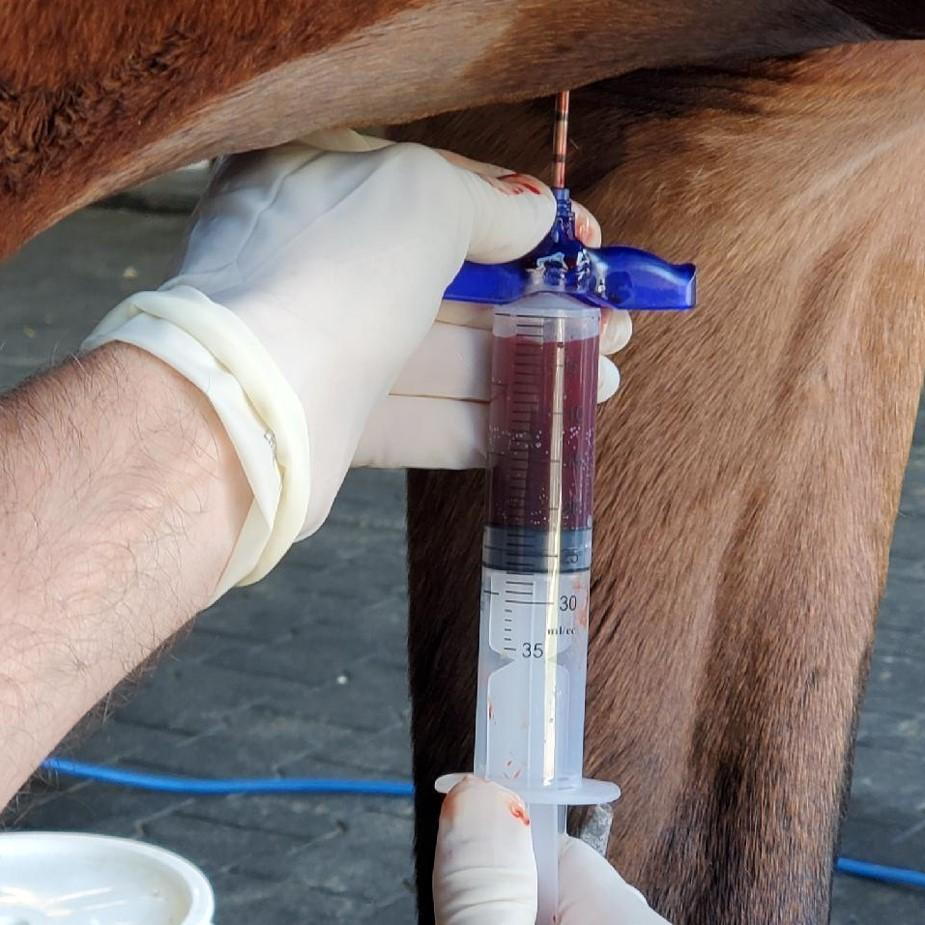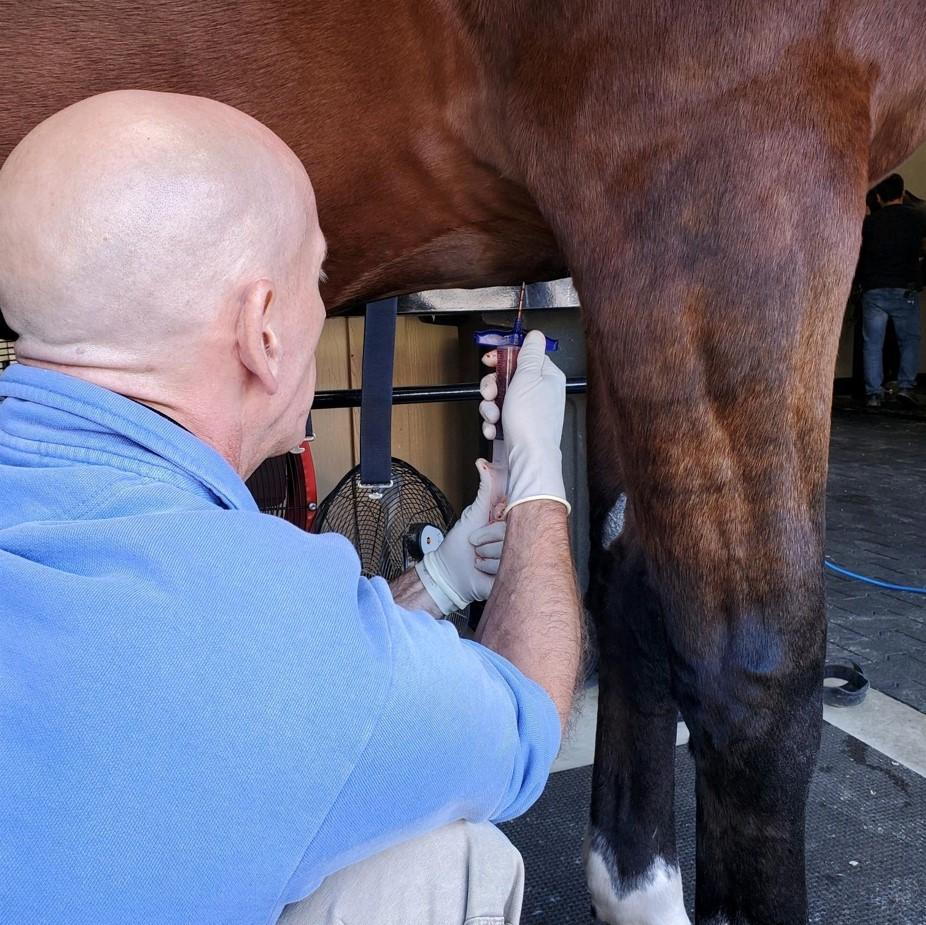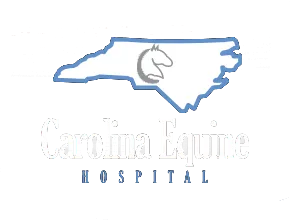Regenerative Medicine for Horses
- posted: Feb. 07, 2022
Regenerative Medicine for Horses

You may have heard the term “regenerative medicine” around the barn or on the internet and been puzzled as to what it means in the horse world. Regenerative medicine is a term referring to advanced therapies for lameness and orthopedic injuries that use the horse’s natural healing processes to rebuild damaged tissue and heal injuries. The goal of regenerative medicine is to replace or reboot tissues (cartilage, joints, tendons, ligaments) that are damaged because of disease, injury, age, or other issues instead of treating symptoms with medication and procedures.
Regenerative Medicine: a branch of medicine concerned with developing therapies that regenerate or replace injured, diseased, or defective cells, tissues, or organs to restore or establish function and structure.
Tendon, ligament, and joint injuries are among regenerative medicine’s most frequent targets. This is partly because musculoskeletal conditions can limit a horse’s functionality.
For example, let’s use a superficial digital flexor tendon (that runs down the back of the leg from just above the knee or hock to the pastern) tear presumably caused by overloading the tissue. This is a common cause of tendon and ligament injuries in athletic horses, and no one treatment approach has resulted in fast and durable repairs. These injuries typically require months of rest, rehab, and careful return to work—a frustrating and economically draining process that often fails due to the high rate of re-injury.
Another classic condition for which regenerative medicine comes to the rescue is osteoarthritis, a painful degenerative joint disease that has no cure. Studies show that utilizing regenerative medicine early on can significantly improve the wellbeing of horses with osteoarthritis.
Types of Regenerative Therapy
PRP (Platelet-rich plasma)
Platelet rich plasma is a concentration of platelets used to deliver growth factors secreted by the platelets to a site of injury. The growth factors act to enhance healing by improving access of healthy inflammatory cells to the tissue through formation of new blood vessels and connective tissue, and regeneration of skin.
Processing of PRP also involves taking a blood sample, which is centrifuged to separate the platelets themselves, which then release growth factors upon activation. Collection of blood and processing of plasma to obtain platelet rich plasma takes approximately 30 minutes prior to injection. Several different PRP kits are available commercially, and depending on the processing method used, the number of platelets and cell purity (e.g. presence of white blood cells) within the final concentrate may vary.
The most common indication for use of PRP is in the treatment of tendon and ligament injuries. Recently, some veterinarians have also used PRP intra-articular to treat osteoarthritis, as well as to enhance bone and wound healing. At Carolina Equine Hospital, we use a platelet isolation device that consistently maximizes platelet recovery and concentration from the patient’s own blood, in 15 minutes. When platelets become activated, growth factors are released, leading to healing, repair and regeneration of soft and hard tissue including tendons, ligaments, muscles, and bones.

Stem cell therapy
Mesenchymal stem cells (MSCs) are defined by their ability to differentiate into multiple cell lines (osteogenic, chondrogenic, and lipogenic) to yield different cell types including tendon, ligament, bone, cartilage, and muscle. The most common source of MSCs in equine medicine is bone marrow, which may be harvested from the sternum or tuber coxae in the horse. In addition to bone marrow, the other source of MSCs in horses is adipose tissue, which is often harvested from the tail head. Adipose tissue may yield MSCs which are isolated and cultured, or processed through digestion and flotation to yield a substance called ‘stromal vascular fraction,’ which contains other cell types in addition to MSCs. Other sources of MSCs in the body include umbilical cord blood, amniotic tissue, dental pulp, as well as synovial fluid and the synovial lining of joints in very low.
In certain tissues, such as bone marrow, we find specific cells that can self-renew and grow more than 200 types of body cells. Veterinarians can isolate these cells, called stem cells or progenitor cells, and either:
- Immediately concentrate and inject them directly back into the same horse at the target location, or
- Culture them in a lab to multiply before injecting them back into the
This process can produce concentrated, regenerated stem cells in 15 minutes. The stem cells are then injected at the injury site as the key to initiating healing.
ACS (Autologous Conditioned Serum)
A number of processes and techniques such as Prostride® have been developed to produce autologous conditioned serum (ACS) type products, to counteract the effects of the cytokine interleukin-1 and other mediators of inflammation produced in sites of inflammation, such as a joint with osteoarthritis. Trauma results in the release of inflammatory mediators including IL-1 as well as other cytokines, which may potentiate further damage and progression of disease. Interleukin-1 receptor antagonist protein works to counteract the destructive effects of IL-1 in sites of inflammation by blocking IL-1 receptors in the joint to break the cycle of inflammation.
Processing of ACS involves taking a blood sample from your horse into a special syringe to stimulate production of IL-1 receptor antagonist protein. The blood is processed on site, centrifuged and the plasma (ACS) is separated for injection.
Specific indications for ACS therapy in equine medicine are for treatment of moderate osteoarthritis, synovitis or capsulitis, or in horses that do not respond following intra-articular anti-inflammatory medications such as corticosteroids. By separating and concentrating the horse's own blood, this dual-device system produces a concentrated solution of cells, platelets, healing factors and anti-inflammatories, in less than 20 minutes, to reduce pain and inflammation associated with osteoarthritis when given back to the horse. This procedure can be performed in hospital or in a suitable farm environment.
Carolina Equine Hospital
Interested in using regenerative medicine on your horse? Give our office a call (336-349-4080) to set up an appointment! We are available for scheduling from 8am-5pm, Monday through Friday.
Location
Find us on the map
Browns Summit Location
5373 NC Hwy 150
Browns Summit, NC 27214, United States

